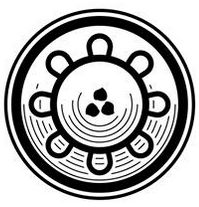
Today is the 70th commemoration of the Nakba, the date where Palestinians all over the world remember the ethnic cleansing of over 700,000 native Palestinians by Zionist settlers. As the media’s attention is (temporarily) on Jerusalem and Gaza, we must try and raise awareness as to what this ‘conflict’ is really about.
Too often we here the ‘neutral’ language describing the ‘conflict’ in the media with such terms as ‘clash’. It’s the usual ‘both sides’ tendency that is so common these days, a tendency designed to erase unequal power dynamics in favor of a sanitised and convenient worldview. That worldview naturally favors ‘status quo politics’ instead of politics based on justice and equality.
I don’t have a #MyNakbaStory because my jeddo (grandfather) refuses to talk about his past. All I know is that he was born in or around Tabariyyah (Tiberias) & grew up in Haifa where he met my Italian grandmother and they both fled to Lebanon. Or something like that.
When they arrived to Lebanon, they were naturalised as back then it was (relatively) easy for Palestinian Christians to get the Lebanese nationality.
I didn’t know any of that up until relatively recently. I grew up thinking we were ‘from Zahle’ (eastern Lebanon). Why Zahle? Some church connections, probably. Many naturalised Palestinians in Lebanon claimed a Lebanese origin for security reasons.
I haven’t given up trying to find out.
In the meantime, here are #MyNakbaStory available online. Please click on the tweets to see the threads.
I was inspired to write this by @joeyayoub’s similar account. What follows is a very fragmented ‘story’ of loss and retrieval. I dedicate this to Aida Cotran. I hope to one day tell her story and speak the words she could not. #Nakba70 #NakbaDay pic.twitter.com/iZDMXHoLiH
— MIDDLE OF THE EAST (@MlDDLEOFTHEEAST) May 15, 2018
Resources (partial list, obviously)
Sites
- The Nakba Files
- IMEU’s Quick Facts on the Nakba
- IMEU’s FAQ on the Nakba: The Nakba and Palestinian Refugees Today
- Al Jazeera’s Nakba resources on ‘Palestine Remix’
- 70 Years of Nakba – Where Can Palestinians Go From Here?
- Articles on the Nakba on Al Shabaka
- Facing the Nakba – Jewish Voice for Peace
- Zochrot’s Nakba Map
- Visualizing Palestine’s Palestine Open Maps
Books
- The Nakba Through Palestinian Writers’ Eyes, edited by Atef Alshaer
- An Oral History of the Palestinian Nakba, Edited by Nahla Abdo and Nur Masalha
- The Palestine Nakba: Decolonising History, Narrating the Subaltern, Reclaiming Memory by Nur Masalha
- The Ethnic Cleansing of Palestine by Ilan Pappe
Related
The Nakba by the Numbers, via IMEU
- Between 750,000 and one million : The number of Palestinians expelled and made refugees by Zionist paramilitaries, and subsequently Israeli forces, during Israel’s creation in 1947-49.
- Between 250,000 and 350,000 : The number of Palestinians expelled from their homes by Zionist paramilitaries between the passage of the UN partition plan in November 1947 and Israel’s declaration of independence on May15, 1948 – prior to the start of the war with neighboring Arab states.
- Approximately 7.1 million : The number of Palestinian refugees and displaced persons as of 2009, including Nakba survivors and their descendants. They are located mostly in the occupied West Bank and neighboring Arab countries such as Lebanon, Jordan, and Syria, denied their internationally-recognized legal right to return to their homeland by Israel, simply because they are not Jewish.
- Approximately 150,000 : The number of Palestinians who remained inside what became Israel’s borders in 1948, many of them internally displaced. These Palestinians (sometimes called “Israeli Arabs”) were granted Israeli citizenship but stripped of most of their land and placed under martial law until 1966. As of 2018, there are nearly two million Palestinian citizens of Israel, who live as second-class citizens in their own homeland, subject to dozens of laws that discriminate against them because they are not Jewish.
- At least two dozen : The number of massacres of Palestinian civilians by Zionist and Israeli forces, which played a crucial role in spurring the mass flight of Palestinians from their homes.
- Approximately 100 : The number of Palestinian civilians, including women and children, massacred in the town of Deir Yassin on April 9, 1948, by members of the Irgun and Stern Gang, pre-state Zionist terrorist organizations led by future Israeli prime ministers Menachem Begin and Yitzhak Shamir, respectively.
- More than 400 : The number of Palestinian cities and towns systematically destroyed by Israeli forces or repopulated with Jews between 1948 and 1950. Most Palestinian population centers, including homes, businesses, houses of worship, and vibrant urban centers, were demolished to prevent the return of their Palestinian owners, now refugees outside of Israel’s pre-1967 borders, or internally displaced inside of them. (See here for interactive map of Palestinian population centers destroyed during Israel’s creation.)
- Approximately 4,244,776 : The number of acres of Palestinian land expropriated by Israel during and immediately following its creation in 1948.
- Between 100 and 200 billion : The total estimated monetary loss of Palestinians dispossessed during Israel’s creation, in current US dollars.
If you support the content published on Hummus For Thought, please consider donating $1 per month on Patreon to help the site become self-sufficient.

I just read a quote from an Israeli journalist in the Washington Post. He said “they (Palestinian) should just get over it. Millions of people including Jew’s have been displaced throughout history and you don’t hear them complaining”. Well actually, you do. And grieving. The ones that aren’t dead that is. I thought “Huh, a diaspora of persecuted people create a diaspora, create a genocide, because they are Gods chosen people? “My heart breaks, turns cold, breaks, turns cold. I will not stop protesting or demanding that the ancient land of Palestine is recognised. Thanks for your words Janet Robertson